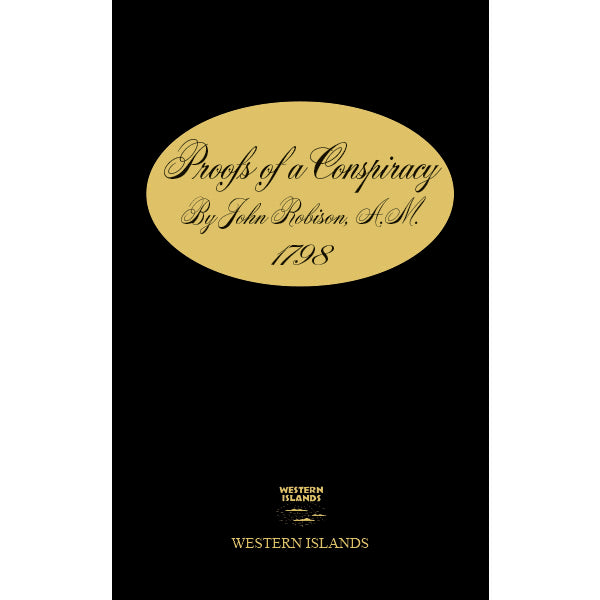Proofs of a Conspiracy by John Robison
Proofs of a Conspiracy by John Robison
Couldn't load pickup availability
Proofs of a Conspiracy by John Robison opens with a scholar’s unease. A professor of natural philosophy — once welcomed in elegant lodges from Liège to St. Petersburg — finds that what began as fraternal diversion has become a conduit for new doctrines. Reading the German Religions Begebenheiten and revisiting his own experiences, he notes the spread of speculative rites and the ambition of men who sought influence behind closed doors.
Robison recounts how, over years, continental lodges absorbed projects far removed from the craft: mystical systems, magnetizers, Rosicrucian schemes, and political adventurers who used secrecy to test ideas that would have drawn censure in public. He describes obtaining ritual papers for the Parfait Maçon Écossais (Perfect Scottish Mason) and several Parisian degrees, then sifting them with care. The pageantry dazzled; the substance, he argues, often served agendas that had little to do with fellowship.
From this survey he advances his central claim. The Illuminati, founded in 1775 at Ingolstadt by Adam Weishaupt and suppressed in 1786 by the Elector of Bavaria, did not vanish. Rather, the network adapted, adopted masonic cover, and pursued the abolition of religious establishments and civil governments. Robison contends that leading actors in the early French Revolution drew on its methods and aid, and he cites correspondence pointing to British links as early as 1784. He presents extracts and names meetings, then traces channels of influence so the reader can examine the case step by step.
This 2024 edition retains Robison’s period argument while adding a fresh publisher’s introduction for orientation. It suits readers of Enlightenment and Revolution studies, researchers of secret associations, and those mapping the crosscurrents between religion and state. Approach Proofs of a Conspiracy by John Robison as both artifact and argument: a primary window into how learned observers in 1797 interpreted secrecy, ideology, upheaval, and political ambition — and a prompt to assess the evidence with care today. (2024ed, 365pp, pb)

